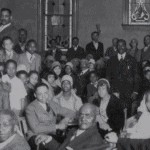
The nature of global missions has changed radically in the latter part of the twentieth century. As Edward L. Smither says in Christian Mission: A Concise Global History, ?though the United States continued to be the leading mission-sending nation at the beginning of the twenty-first century, the Global South church now sends the majority of the missionaries to the nations. The profile of the missionary is no longer William Carey or David Livingstone but global workers from Korea, Brazil, Nigeria, India, and the Philippines.?
The Twenty-First-Century World
How did our world change so quickly and radically? Smither notes three major factors that have contributed to the nature of the twenty-first-century:
- Globalization. Several factors have contributed to globalization, such as global migration, developments in transportation, our ?increasingly networked global economy?, and technology (particularly the internet). While globalization has its downsides, missionaries have leveraged its benefits for the worldwide spread of the Gospel.
- Global migration. International students, relocations for work, and displacement due to crises such as war and famine have resulted in a ?scattering?. This has caused some to migrate to a place where they have unique opportunities to hear the Gospel. Also, the reverse has occurred, where Christians have taken the Gospel with them to new homelands.
- Violence. Terrorism and other forms of violence have also contributed to global shifts.
Shifts in Global Missions
This century has seen a striking increase of missionaries from Asia, Africa, and Latin America.
- Korea: Revival broke out in Korea in 1906 and by 1980, ?just under one hundred Koreans were serving as full-time missionaries.? In 2013 this rose to over twenty thousand missionaries in 171 countries and from a variety of denominations. Many are well educated and serve in medical, teaching and business contexts in China?as well as Buddhist and Muslim?contexts
- China: The Chinese Congress on World Evangelization was first launched in Hong Kong in 1976, and in 2006 ?over three thousand Chinese believers attended the seventh congress, which met for the first time on Chinese soil.? The Chinese church evangelizes within China but has also reached expatriate communities in Southeast Asia, Europe, South America, and North America.
- India: In 1977, the India Missions Association was founded and by 2009, ?the network included 220 mission agencies and over fifty thousand Indian missionaries.
- Africa: Riding the wave of revival, indigenous African leaders mobilized for mission in Ghana and Nigeria. In Ghana, eight thousand new churches were planted. By 1986, while ten thousand international missionaries were serving in Nigeria, the Nigerian church had also sent out five thousand nationals for mission in other places. By 2005, ?over five thousand Nigerians connected to ninety different organizations were ministering in sixty-five countries around the world, including China Brazil, and Bolivia.? In 2006, the Nigerian Evangelical Mission launch started a campaign called Vision 50/15 that works towards sending out fifty thousand Nigerian missionaries by 2021.
- Latin America: A global mission conference organized by the International Fellowship of Evangelical Students launched in 1976 and by 1987 it had thirty-one hundred delegates. By 2009, over ten thousand Latin Americans have been sent out as missionaries. Brazilians ?make up the oldest and largest Latin American mission movement,? growing from 595 missionaries in 1972 to over five thousand in 2010.
Advantages and Challenges
These developments from within non-Western missions provide unique advantages and also challenges.
The advantages for non-Western missionaries are strong. They usually face fewer political barriers. Many are from majority world and are uniquely familiar with financial hardship and suffering, providing them endurance and pastoral sensitivity to those in similar situations. In many cases there is a smaller culture gap, especially through familiarity with widespread animism and spirit-world beliefs that often catch Westerners off-guard.
Some of the challenges that non-Western missionaries face include a lack of cross-cultural and missiological training, financial resources and missionary support and care. Some face language barriers. What?s more, while non-Western missionaries ?may not have the political baggages of Western workers, they do lack political leverage and may face more discrimination from local authorities.?
This post is adapted from chapter 6 of Christian Mission: A Concise Global History by Edward L. Smither (Lexham Press, 2019).






